
Director's Report
Dear fellow conservationists,
In this issue of Environmental Currents we celebrate the conservation successes of 2021; offer a funding opportunity to our partners in the Brandywine Creek Greenway to spur more great work; highlight Eagle Scouts at Waterloo Mills Preserve building bird boxes to promote critical habitat; and show the beauty of southwestern Pennsylvania as we feature the winners from our first photo challenge at Penguin Court, in partnership with the Westmoreland Pollinator Partnership. We introduce you to new faces on staff and new works of art that have their foundation in nature. And we also detail our partnerships in the Oxford region and staff’s evolving work to identify and protect our precious woodlands.
In this issue, we discuss how the storm that was the aftermath of Hurricane Ida impacted the trails and resources at the Laurels Preserve and what staff have done to remedy the damage. And as you are probably well aware by now, our campus in Chadds Ford was also heavily impacted. Flood waters came into the two Conservancy buildings on the ground floor, which contained offices and conference rooms—in addition to several other affected buildings on our campus, including the lowest level of the Brandywine River Museum of Art. Restoration work on our campus is well underway, but the work is significant and ongoing. We are most grateful to all those who have leant their support during this time—whether that be volunteering at our recent campus and trail cleanup, donating to our Emergency Flood Relief, or offering to help out in other ways.
While our office buildings are closed for the time being, our staff haven’t skipped a beat working remotely. As a testament to staff and our work, not a global pandemic nor a flood can stop the professional and mission-driven work of the Brandywine Conservancy. Together with our partners and supporters, the work continues more purposeful than ever, with new faces and new ideas. And we will continue to adapt and find novel ways to do our work as conditions change.
It’s a privilege to work alongside such great people, with such wonderful partners, and in places where the beauty is awe inspiring. I hope you enjoy this issue of Environmental Currents and please take a moment to appreciate and support our work and exceptional staff in the knowledge that we continued unfettered during trying times and through some extreme conditions.
In gratitude,
Ellen
Ellen M. Ferretti
Director, Brandywine Conservancy
Brandywine Conservancy Celebrates a Big Year in Land Conservation
Even through the world’s challenges, this past year proved to be a very successful year in protecting key properties and their natural resources in Pennsylvania and Delaware. While adapting to changing COVID recommendations and protocols over this past year, the Brandywine Conservancy’s staff creatively continued its conservation momentum—all while meeting national standards for excellence as an accredited organization with the Land Trust Accreditation Commission.
While working remotely, staff transitioned to electronic recording for all easement documents, facilitated and completed remote notarizations, and switched to the WeConservePA model easement to be consistent with our state land trust partners. By the end of the Brandywine’s fiscal year, on June 30, 2021, staff had completed 24 conservation projects, protecting over 1,560 acres in southeastern Pennsylvania and northern Delaware. The acquisitions ranged from a modestly sized, but very important, easement donation in the heart of the Brandywine Battlefield National Historic Landmark, to the vast sweeping acreage procured along the Octoraro Creek that is slated to open later this year through the Oxford Area Foundation as the publicly accessible Glenroy Preserve.
Other projects of note included an expansion of the trail on Birmingham Hill Trail, Brandywine’s first publicly accessible preserve; the completion of a new easement in close proximity to Brandywine’s beloved Laurels Preserve; and collaborations with multiple public and private partners to preserve Chester County’s productive farmland through purchased easements. Projects were completed in all six of the Conservancy’s Landscape Focus Areas throughout south-central Pennsylvania and northern Delaware, which includes the headwaters of the Brandywine, the Greater King Ranch area, the Lower Brandywine Creek Watershed, White Clay/Red Clay Creeks, Greater Oxford Area, and Darby Creek/Waterloo.
Eight new easements were also added to bring our total to 497 easements held by Brandywine. These included:
- 50+/- acres preserved in Colerain Township, Lancaster County
- 105+/- acres preserved in Colerain Township, Lancaster County
- 112+/- acres preserved in West Marlborough Township, Chester County
- 31+/- acres preserved in Honey Brook Township, Chester County
- 10+/- acres preserved in Birmingham Township, Chester County
- 40+/- acres preserved in Chadds Ford Township, Delaware County and Brandywine Hundred, New Castle County
- 18+/- acres preserved in Honey Brook Township, Chester County
- 80+/- acres preserved in East Fallowfield Township, Chester County
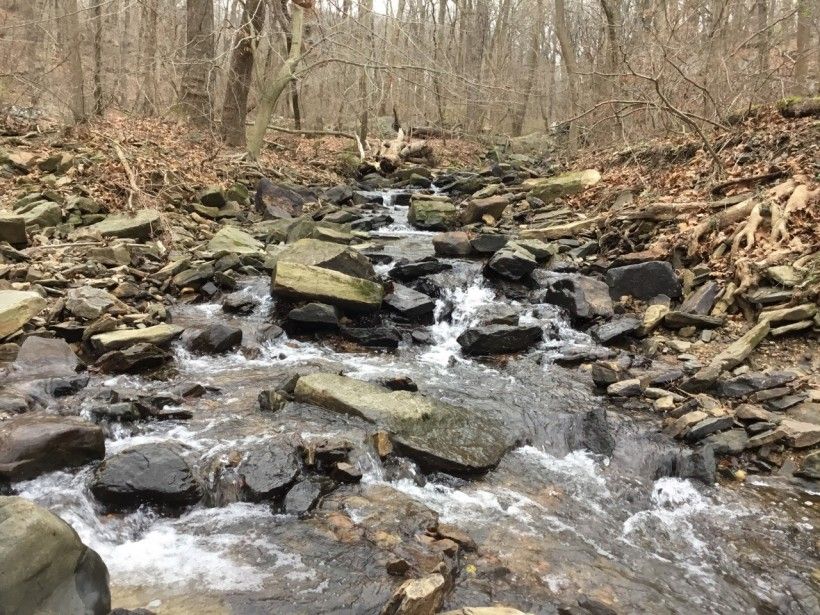
At the forefront of every acre preserved are individual conservationists who voluntarily choose to protect their properties forever. In recent conversations with easement landowners, the “love of the land” and wanting the community to value and appreciate the natural beauty of fields, woodlands, and streams is always at the forefront of their thoughts.
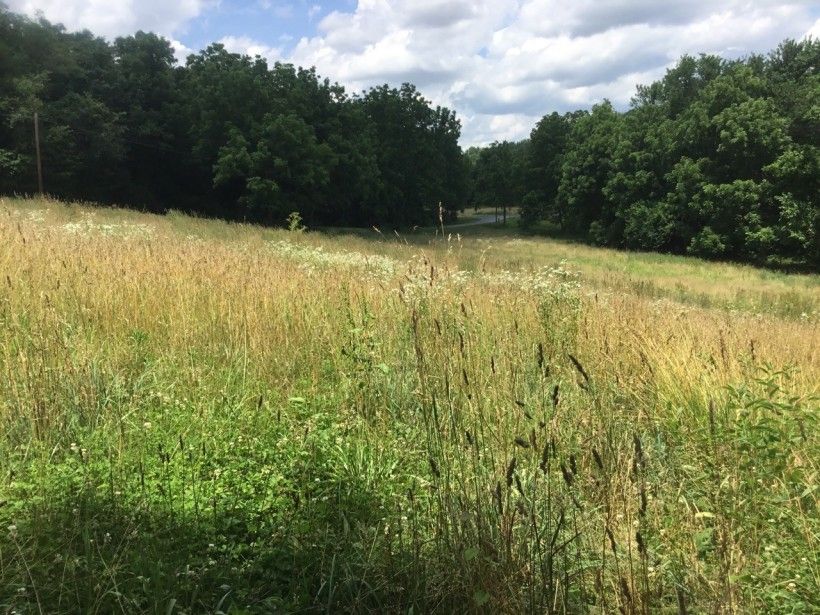
As one conservation easement grantor’s family recently told us, “Moving to the Brandywine River Valley over 46 years ago, we fell in love with the history, flora, fauna and environment of the area. We’ve also seen change that threatens the area’s beauty. We want to protect the area we love and call our home.” These landowners deserve gratitude for their generous easement gifts.
While Brandywine celebrates the successes of the past year, looking ahead, the rest of 2021 and early 2022 will also be an exciting time for the Brandywine’s ongoing conservation efforts. Over 16 active projects in Land Conservation and Land Stewardship are already in the works. In total, Brandywine has helped protect over 68,500 acres in Pennsylvania and Delaware in partnership with committed landowners and public and private conservation stakeholders.
The 2021 BCG Mini-Grant Program is Now Open!
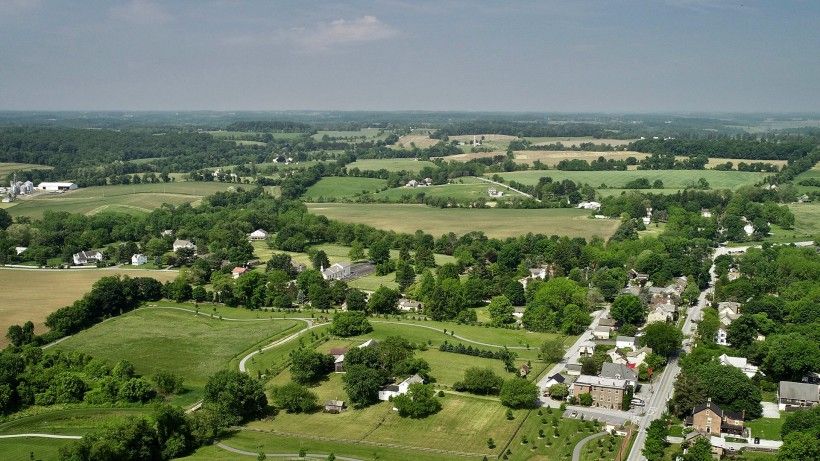
The Brandywine Conservancy is pleased to offer the Brandywine Creek Greenway (BCG) Mini-Grant Program to our Pennsylvania partners for a second consecutive year in 2021-2022. The program is funded by the Community Conservation Partnership Program Environmental Stewardship Fund—a grant from the PA Department of Conservation and Natural Resources (DCNR), administered by the Bureau of Recreation and Conservation (BRC). With these funds, the Brandywine Conservancy will be able to award grants of $2,000 to $10,000, up to a total amount of $28,000, for projects that will support and advance the goals and objectives of the BCG Strategic Action Plan (2014). This year's grant funding round is now open with applications due by Friday, October 15, 2021, at 4:00 p.m.
The Mini-Grant Program will fund small projects that improve parks, open space and community trails, and will advance priority conservation and recreation projects identified in the BCG's Strategic Action Plan (Part 1 and Part 2), plus other publicly vetted municipal planning documents. Eligible applicants include Pennsylvania non-profit organizations with tax-exempt status 501(c)(3), municipalities, counties, and some educational institutions.
There were seven BCG Mini-Grants awarded during last year’s 2020 grant round including:
- Chadds Ford Township - Brandywine Creek Emergency Locator/ Educational Signage
- East Bradford Township - Strode's Barn Restoration Design
- East Fallowfield Township - Outdoor Exercise ‘Park’ and Park Bench Installation
- Kennett Area Park Authority - Convert Former Paved Park Entrance to Pedestrian Trail
- Borough of Modena - Mode House Park
- Pocopson Township - Restoration of Locust Grove Schoolhouse
- Wallace Township - Burgess Park Rain Garden Restoration
Click here for more information on the 2021-2022 BCG Mini-Grants and how to apply.
A Post-Ida Update from the Laurels Preserve
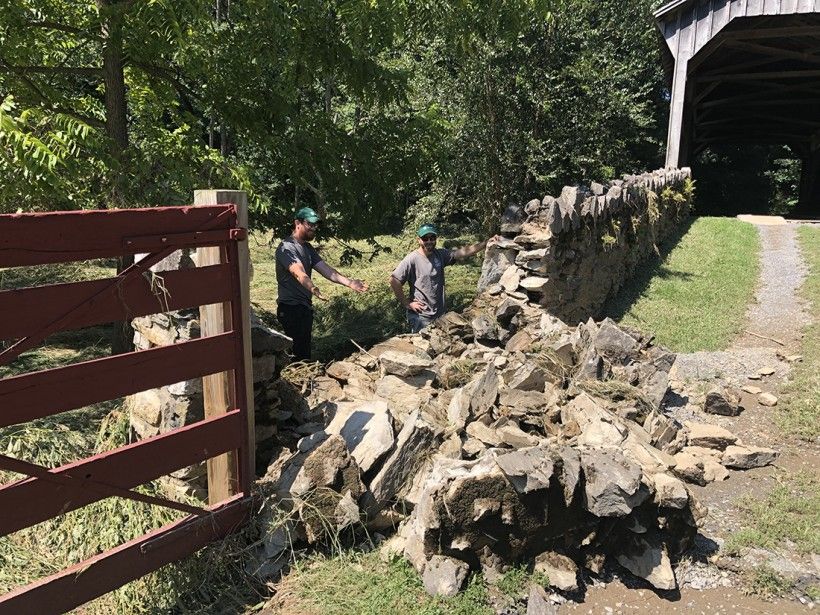
In addition to the Brandywine’s Chadds Ford campus, the Laurels Preserve was also heavily impacted by the remnants of Hurricane Ida. In just two hours, the storm dropped over 10 inches of rain in and around the Laurels area, causing massive water damage to the Preserve.
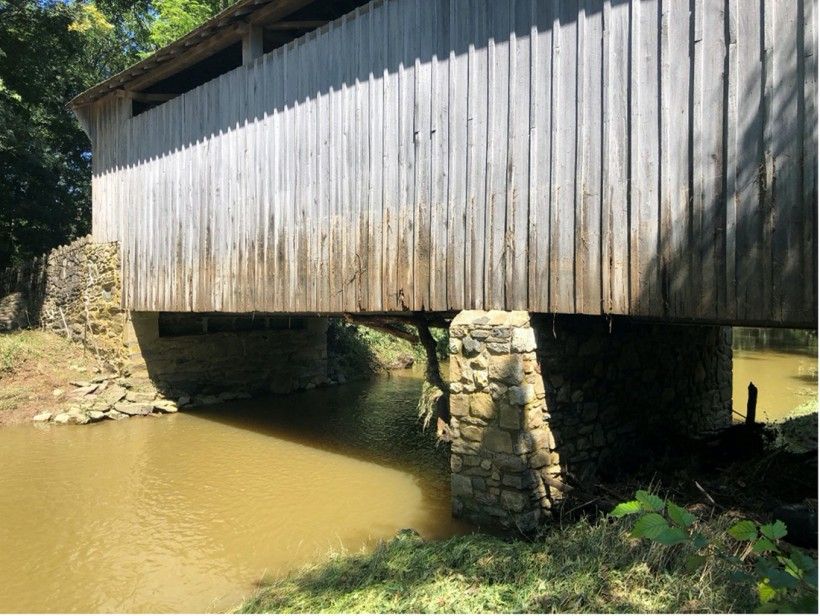
New tree plantings were extensively damaged in the flood, as well as all of the trails and stream crossings. Numerous trees were downed, benches were lost, and fencing was washed away. Both covered bridges had flood water above the floorboards, causing some cosmetic damage, but thankfully they both remained structurally sound.
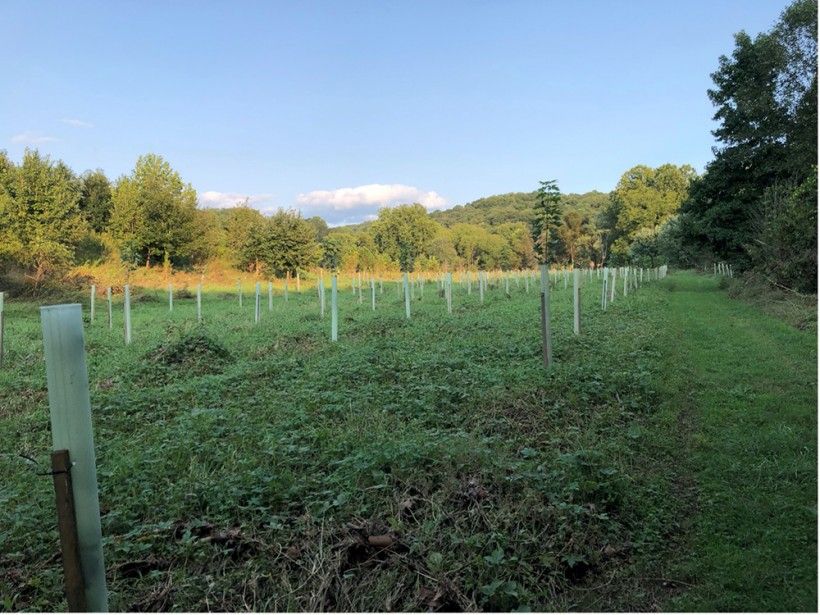
Following the flood, the Laurels was closed for two days while Brandywine’s Preserve staff members John Goodall, Caleb Meredith and Clint Mautz worked on repairs and cleanup. While there is still some work left ahead, tremendous progress has already been made thanks to their efforts. Within two weeks, they saved eight acres of new tree plantings; stabilized trails and the main entrance to the Preserve; removed the majority of tree damage; and repaired culverts and major trail washouts, among many other flood cleanup tasks and repairs.
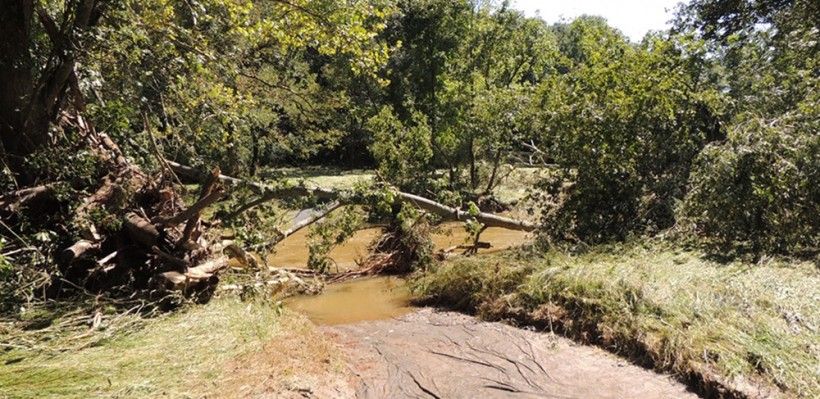

Members of the Brandywine’s Laurels Committee extended their gratitude to the Preserve team for their efforts. “Caleb and Clint have done a phenomenal job in record speed,” said committee member Phoebe Fisher. “It is incredible how many separate damage points they have already fixed, not just on the main trail, but smaller trails, and massive tree falls that were blocking the crossings." Committee member Anne Moran added, “A huge thank to you to John, Clint, Caleb and the whole Laurels/Brandywine team—you are all amazing. We are so grateful!"
Eagle Scouts Help Build New Bird Homes at Waterloo Mills Preserve
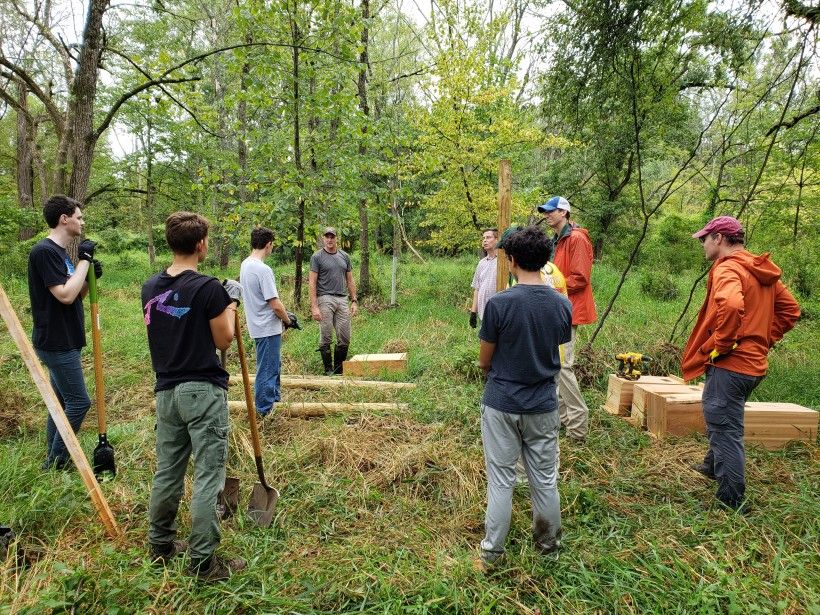
To the keen observer who has visited Waterloo Mills Preserve recently, you might have noticed a few new bird houses strategically placed throughout the area. As with most work around Waterloo, these homes were intended to integrate into the landscape and not change the appearance too much. The key goal was to expand habitat for our local fauna.
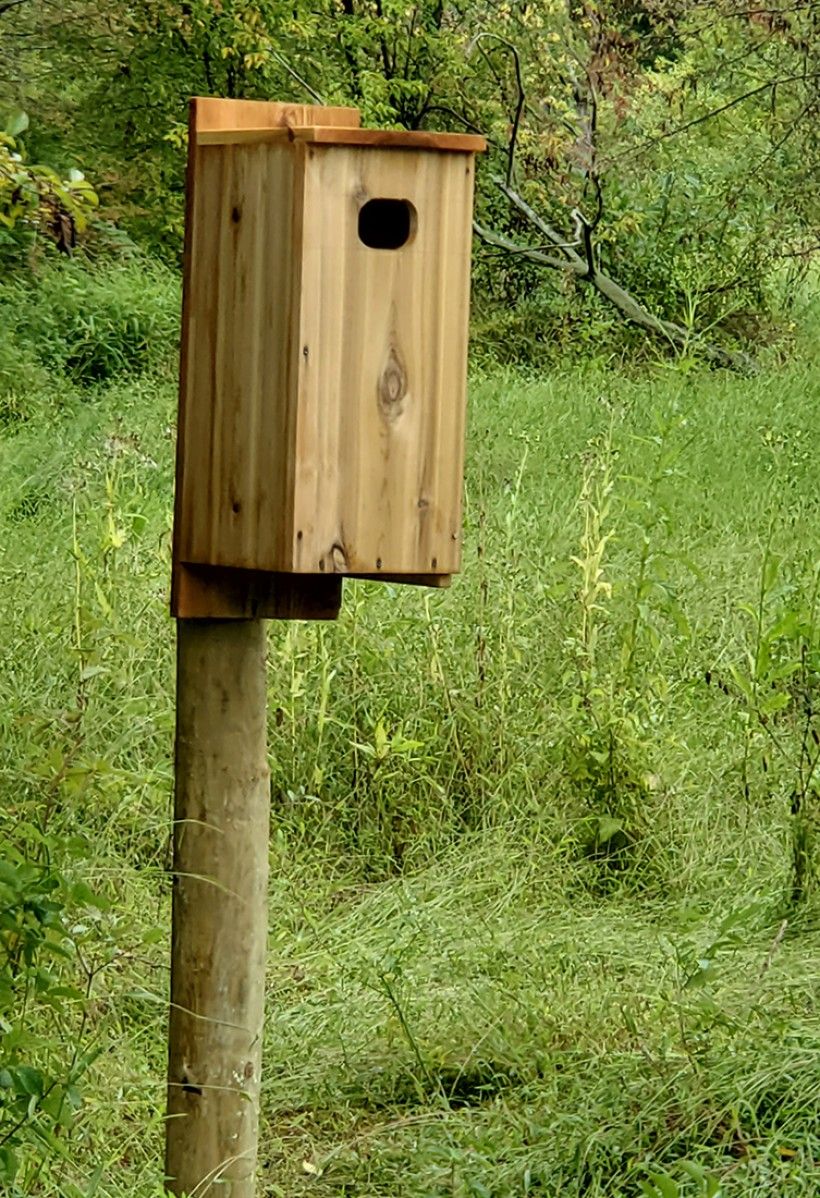
Habitat is comprised of three simple requirements: food, water and shelter. At Waterloo Mills, Darby Creek bisects the 170-acre nature preserve. Water is available. The variety of habitat types—meadow, woodlands and wetlands—are managed for regional biodiversity and are also well represented within the preserve. What the preserve does lack, however, is suitable nesting sites for certain species. Large trees with cavities aren’t too common and because of that, the species relying on these cavities to nest also seem to be absent. During migration, Waterloo is more than adequate for species stopping over for rest and refueling before they move on. What staff is now trying to provide, is the opportunity for these species to nest on our preserves. Particularly for species with very specific nesting requirements such as wood ducks and hooded mergansers.
Staff recently had the opportunity to work with a local Boy Scout and his troop to get his Eagle Scout badge. The project entailed building homes, or nest boxes, for wood ducks. Thirteen boxes were constructed and installed along Darby Creek. The nest boxes were erected on sturdy posts in habitat that wood ducks find suitable. The creek and wetlands were ideal locations. Historically, a few wood ducks have bred and raised young successfully, but this project is intended to bolster their numbers.
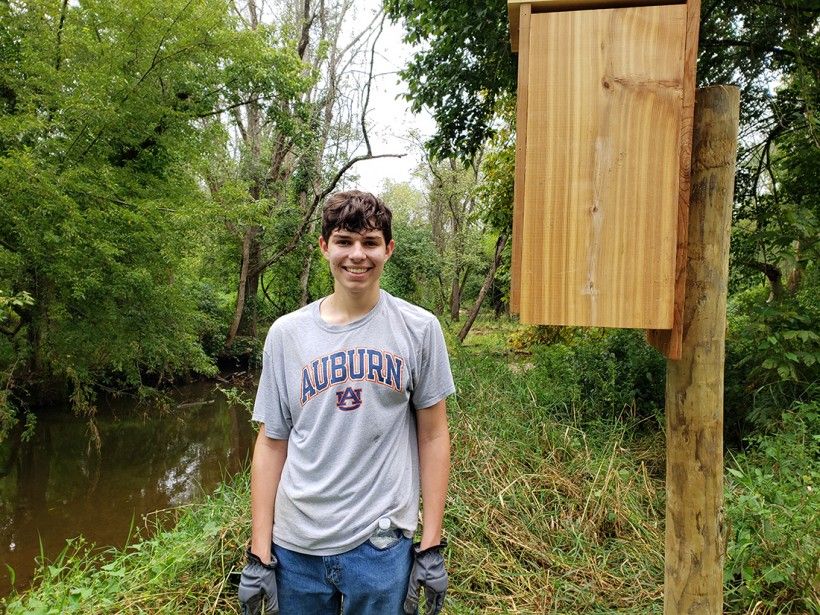
Other species will utilize the same nest sites as wood ducks and that’s the reason the Eagle Scouts placed plenty of nest boxes throughout. Hooded mergansers and eastern screech owls will also use the new structures as roost, feeding and nesting sites. Staff will now monitor the new homes periodically to inspect how often they are used and what species are using them.
While you’re taking your next hike throughout the preserve, see how many natural cavities, in trees, you can find. Then, at Waterloo, see how many newly constructed wood duck homes you can find. Always remember the outdoors is where life is and where learning should begin.
We are ever so thankful to the Eagle Scout who made this project happen. If you’re interested in a scout project on one of our nature preserves, please reach out to us at [email protected].
Penguin Court's PA Pollinator Photo Challenge: The Results are In!
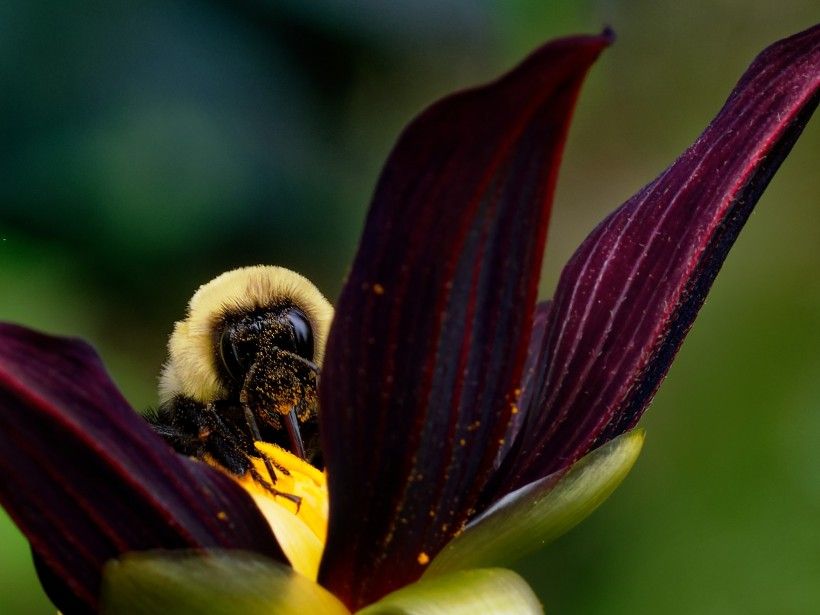
This summer, the Brandywine’s Penguin Court Preserve hosted a photo contest with the Westmoreland Pollinator Partners (WPP) that highlighted pollinators found and photographed in Pennsylvania.
Penguin Court is one of 23 member organizations that comprise the WPP, which promote and conserve the resources needed by our invaluable pollinators, from ants to wasps. The group thought a photo contest would be a great way to engage the public while respecting pandemic restrictions.
The response was fabulous with 19 children submitting 48 photos and 178 adults entering 443 images from across the Commonwealth! Many people commented that they appreciated the challenge, which made them look at their landscape on a macro level. Others enjoyed the quality time spent with their children and grandchildren.
Submissions were reviewed by a panel of judges who represented the Southern Alleghenies Museum of Art (SAMA) and the Westmoreland Photographers Society. First through third places were awarded in both the adult and youth categories, along with several honorable mentions noted.
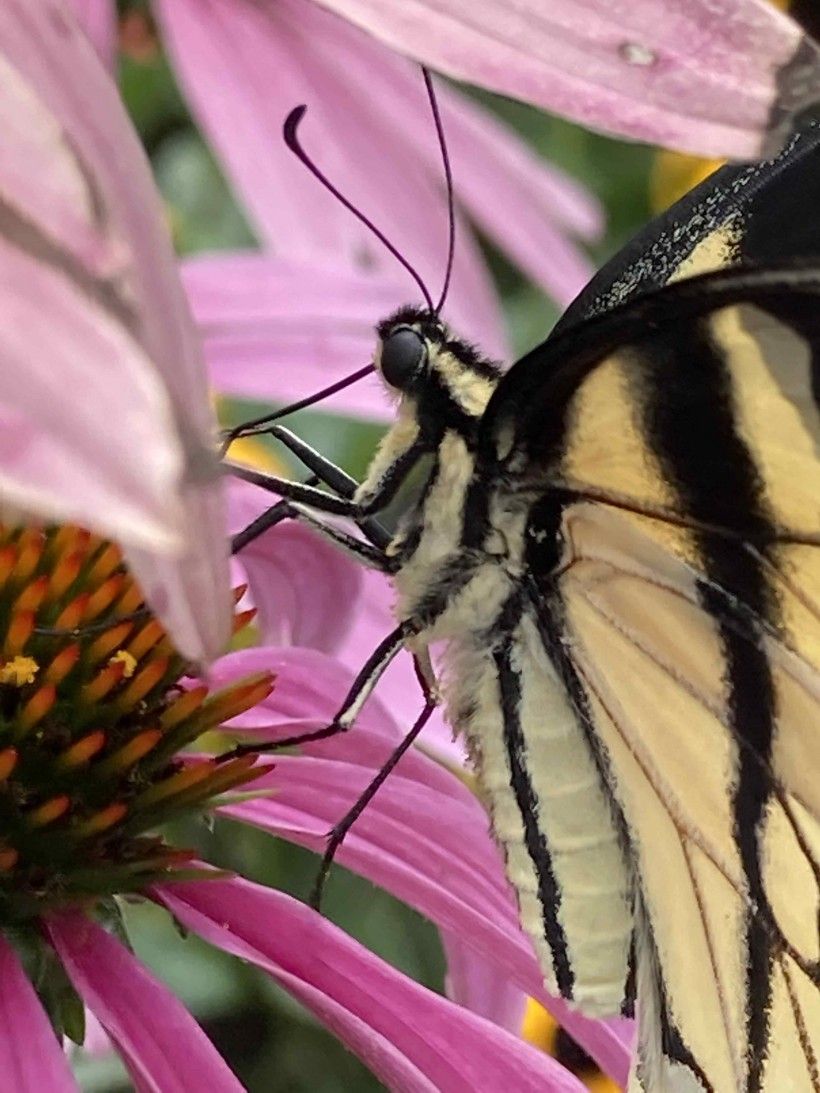
In the youth category, first place was awarded to Brooke Gajeski of Kennett Square for her closeup of a swallowtail butterfly nectaring. Second place went to Olivia Lucci of Murrysville for her photo of a Great Spangled Fritillary and Eastern Tiger Swallowtail on butterfly weed. Olivia also received an Honorable Mention for another submission. Third place was presented to Daniel Schildkamp of Greensburg for his image of a hoverfly.
In the adult category, Elizabeth Harper of Muncy won first place for her gorgeous photo of a bumblebee on a ‘Verrone’s Obsidian’ dahlia. Besides having stunning composition, the judges joked that the bee looked like it received a “buzz cut” for its photo shoot. One of her other entries also received an Honorable Mention.

Second place was presented to Dan Hunter of Export for his picture of a pollen-laden honeybee approaching an orange sunflower. He noted that the bee caught his attention due to the amount of pollen it had collected. The judges loved all of Mr. Hunter’s submissions, which also received Honorable Mentions.
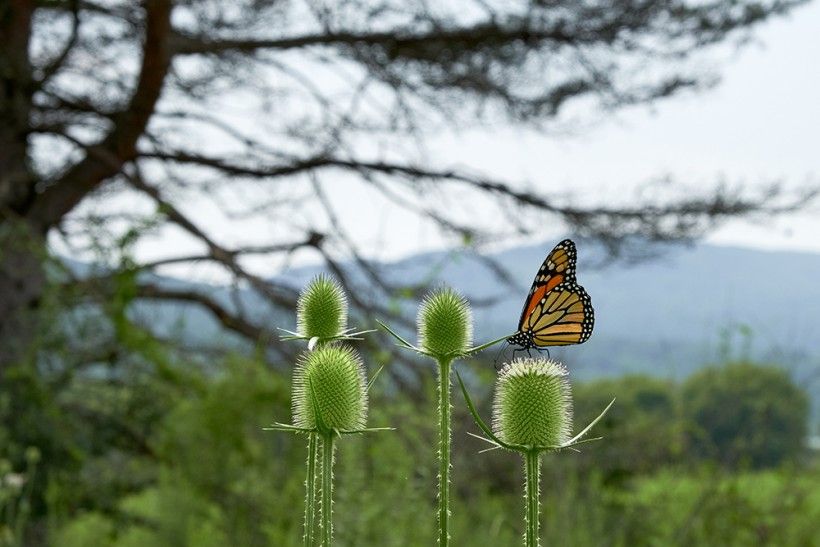
Jim Murphy of Greensburg won third place for his well-framed photo of a monarch butterfly on thistles. The judges felt it hit all artistic perspectives. Mr. Murphy had commented that he photographed the butterfly on the aptly named “Butterfly Trail” in Bald Eagle State Park.
Youth who received honorable mentions include:
- Olivia Lucci of Murrysville
- Gianna A. of Allison Park
- Karlee D. of Chadds Ford
- Abigail L. of Armbrust
Those receiving honorable mentions in the adult category include:
- Dan Hunter – twice!
- Elizabeth Harper
- Amanda Johns
- Cathy Straub
- Bonnie Pancoast
- Kandi Newell
- Patti Jacobina
- Andrea Halfhill
- Michael Palko
- Marie Hanaway
- Sean Montgomery
- Janice Florina
- Jayne Chadsey
- Jim Meehan
- Joe Allen
- Deb Carpenter
- Mary Kapral
- Anne Gill
- Wendy Fox
- Robert Davis
Winners were revealed at the “Monarchs, Milkweed and More” event on August 29 that Penguin Court and the Southern Alleghenies Museum of Art (SAMA) coordinated in Ligonier, PA. The crowd collectively “oohed and aahed” at the winners and honorable mentions, which may be viewed, along with all the submissions here.
Special thanks to everyone who participated, including the judges: Brian Kloock, Annie Geiger, and Kristin Miller; the coordinating committee: Deborah Christopher, Wilma Light, Melissa Reckner, and Patti Schildkamp; the prize sponsors: Giant Eagle in Ligonier, First Energy, and Penguin Court; and the Brandywine Conservancy & Museum of Art’s Marketing Team.
How Brandywine Identifies and Protects the Benefits of Woodlands
Woodlands provide a variety of important environmental, social, and economic values and functions for our communities in southeastern Pennsylvania. Trees reduce and slow the impact of floods by absorbing water through their roots and infiltrating precipitation as it falls. On steep slopes or along streams, trees can help reduce erosion. Their shade, root systems and addition of leaf litter to waterways can also have beneficial water quality impacts that protect valuable instream habitat for aquatic insects and fish communities, as well as drinking water that may be extracted further downstream. Woodlands also provide critical sources of nectar, pollen and habitat for our pollinator communities during the various stages of their life cycles. In addition, woodlands provide natural barriers and filters for both sound and air pollution, and actively perform carbon sequestration services—which help reduce the impacts of climate change while also providing protections against some of its most significant impacts.
With all these factors in mind, the importance of woodlands cannot be overstated. Learn more below about how the Brandywine works to identify and help protect the woodlands in our region, and how you can enjoy the many benefits of the sustainably protected woodlands near you.
Identify
Given that woodlands vary in size and perform varying functions across the landscape—depending upon how they are located in relation to other resources and sensitive areas—they can be prioritized and grouped into different classes.
Utilizing geographic information systems (GIS)—mapping software—and a high-resolution dataset of woodlands obtained through remote sensing technology, the Brandywine Conservancy evaluates woodlands based on their overall size, the presence and size of any interior woodlands (those areas of woodland buffered by an additional 300’ of woodland), the presence of streams that they protect, and whether the woodlands align with steep slopes or headwater areas within the municipality. These woodlands are then ranked based on these criteria.
Protect
Woodland protection in our new easements
From a small woodlot to an extensive forest, woodlands protect water quality, sequester carbon, cool the air, and provide habitat for wildlife, while also providing scenic views and recreational opportunities. When Brandywine protects land through conservation easements, we also protect these conservation values forever.
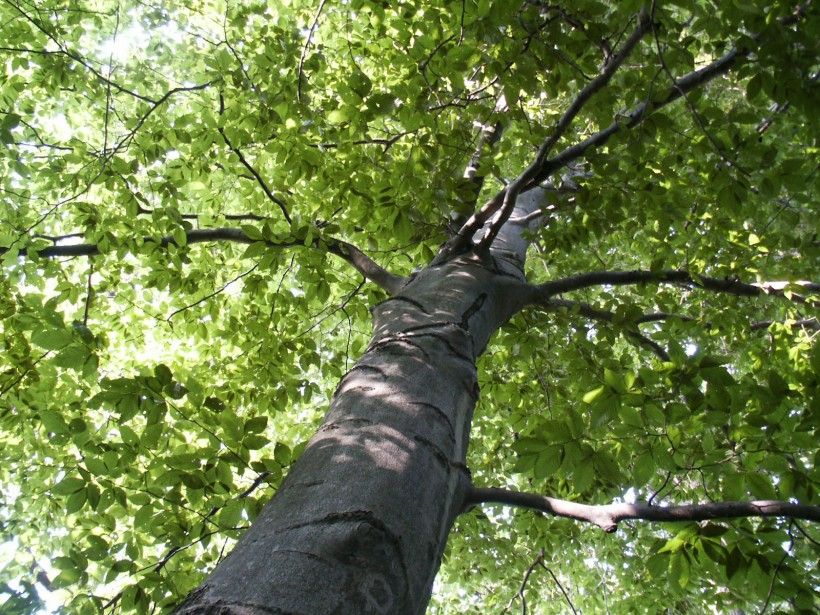
Forever is a long time, so we aim to draft easements that permanently protect conservation values while retaining flexibility to adapt to change so we can also best protect those values. Over the last 50+ years, since we began holding conservation easements, science has evolved to better understand the complexity of woodland ecosystems. Many of our early conservation easements simply had a flat prohibition on cutting trees in woodlands. That is what Brandywine, and the easement grantors, wanted: to protect forever the trees themselves. But conservation science has shown that protecting trees is not enough to protect ecosystems.
The forests of the Northeast were last clear-cut in the early 20th century. Today’s woodlands consist of even-aged stands of mature trees with dense canopy and little understory. With the added impacts of invasive plants and deer pressure, these legacy woodlands are simplified systems, more like tree senior centers than multi-generational communities. While they’re beautiful, such woodlands are less resilient to environmental shocks such as flooding, drought, insect infestations or climate change—nor can they support diverse native wildlife.
For example, as related by Scott Weidensaul, in his 2021 book A World on the Wing: The Global Odyssey of Migratory Birds, radio tag research illuminates the complex habitat needs of deep-woods specialists such as wood thrushes (Hylocichla mustelina), during the breeding season. Wood Thrushes migrate from Central America to Northeastern forests in spring. They nest in mature woods with moderate understory, where they can be heard throughout our region singing a flutelike “ee-o-lay”. When the young birds are fledged, Wood Thrushes move to “early successional” habitat: dense, scrubby thickets with tangled vines. There, they bulk up for their fall journey south, gorging on insects, fruits and berries. Without a decent amount of this “edge” habitat to complement interior woods, these birds cannot make it back to their wintering grounds. Since successional habitat eventually becomes mature woods, it must be continually created; augmenting natural processes by cutting some trees to foster shrubs, vines and young trees.
A sustainable approach to protecting woodlands in our region must go beyond just protecting trees. It encompasses management, which—depending on conservation goals—can include some tree cutting to promote diverse tree ages, species composition and woodland structure. While Brandywine permitted management to some extent in our past easements, our new model easement makes this approach even more available to the landowner.
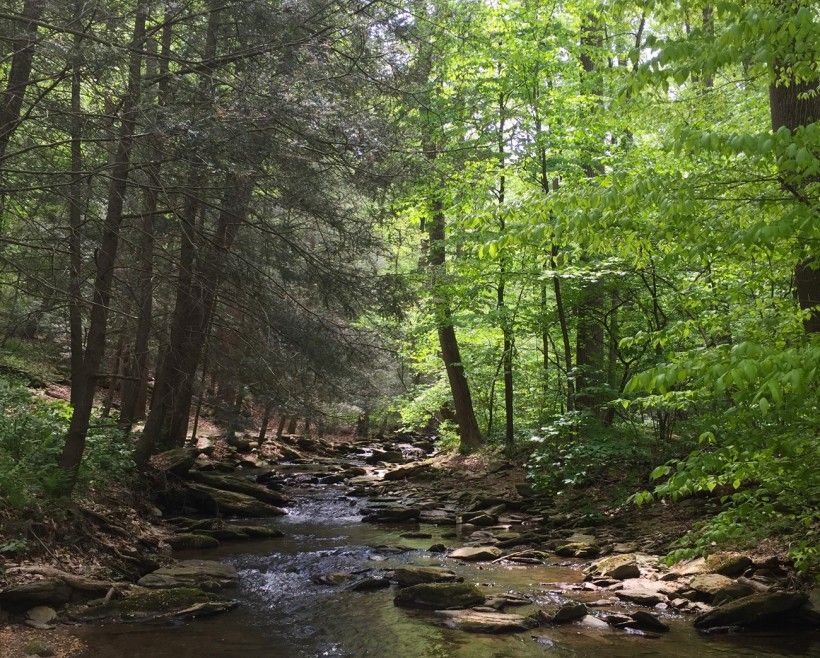
Beginning in 2020, Brandywine began using a new model conservation easement, based on the WeConservePA template (WeConservePA, formerly PALTA, is the Pennsylvania land trust association). Woodlands are now protected from cutting, with limited exceptions. But tree-cutting may be permitted, if consistent with the easement’s conservation objectives, when done under an approved long-term Resource Management Plan that protects natural resources, or a Forest Management Plan that maintains or improves forest resources. In addition, except within a designated “Highest Protection Area,” trees may be cut in a sustainable manner with an approved Resource Management Plan.
The new model easement does not require management of the woodlands. But it does provide a landowner with the flexibility to adopt a long-term management plan that includes some tree cutting. Such a plan typically entails active management to promote regeneration of the woods by controlling invasive plants and reducing deer browse. It may include planting if natural regeneration is unlikely.
Forest Management Plans are about more than tree cutting; they set conservation goals and identify management strategies that allow the woodland to thrive over the long term. And they are revisited regularly, usually every 10 years, to re-assess and adapt to changes. As woodlands change and our knowledge of them increases, Brandywine’s easements continue to protect woodlands by enabling landowners to use practices informed by the latest scientific understanding.
Woodland protection through municipal regulations
In addition to protecting woodlands through our easements, Brandywine also works with municipalities to protect woodlands through municipal regulations. Protecting woodlands through regulations can be as simple as defining woodlands and interior woodland habitats within municipal ordinances and establishing maximum disturbance limits for each type of woodland (i.e. Woodlands – 20% maximum disturbance; Interior woodlands – 10% maximum disturbance). Additional protections can be assigned by connecting ordinance standards with woodland classification maps developed through the identification process detailed above and limit woodland disturbance based on the woodland classification. If these disturbance limits are exceeded, woodland replacement can be required to incentivize the preservation of existing trees.
To help municipalities begin the process of woodland protection through ordinances, Brandywine has developed several model ordinances that can be modified to a specific municipality’s needs and goals. Our sample woodland protection ordinance establishes disturbance limitations, outlines the steps for ensuring existing trees are protected throughout the development process, and establishes woodland replacement requirements. In addition, our sample forestry/timber harvest provisions were designed to promote sustainable forestry practices while complying with Pennsylvania’s Act 38 - Agriculture, Communities, and Rural Environment (ACRE). When paired with other woodland protection strategies, like protection through easements, woodland protection through municipal regulation can ensure additional protections for this important natural resource.
Enjoy
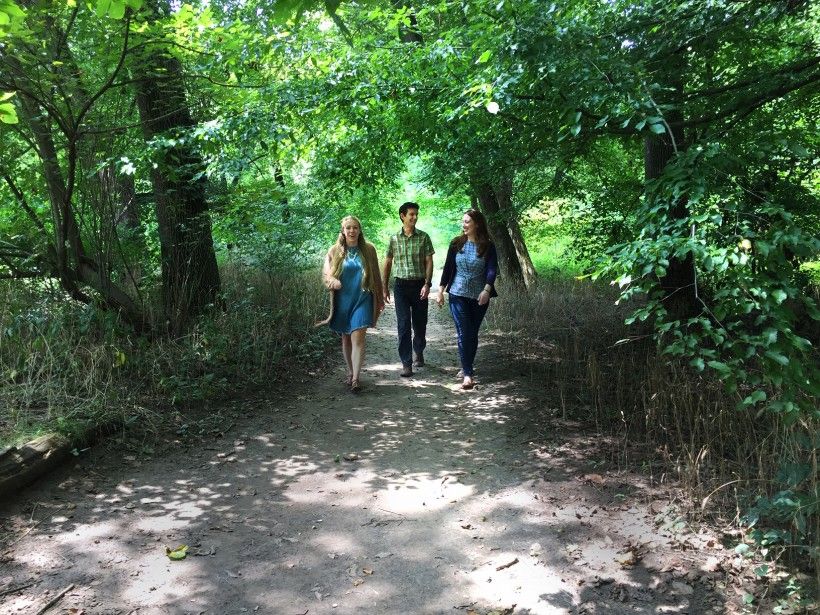
Enjoying woodlands
Sustainably protected woodlands are places people can enjoy for generations. Here are some places where you can get to know protected woodlands:
- Explore the woodland trails throughout the Brandywine’s Laurels and Waterloo Mills Preserves (open exclusively to Brandywine members).
- Join Brandywine, East Bradford and West Bradford on our 5th annual Walk in Penn’s Woods, through public township parks along the East Branch Brandywine Trail, on October 3, 2021
- Visit publicly accessible woodlands—including those protected by Brandywine easements—at your local preserves, including Natural Lands’ Stroud Preserve, ChesLen Preserve and Crow’s Nest Preserve, and other public open spaces—including portions of woodlands around the Struble Trail.
- Find other woodlands by using the Conservancy’s Brandywine Creek Greenway app.
- Stay tuned for information on the public opening of Oxford Area Foundation’s new Glenroy Preserve—recently facilitated by the Brandywine—which will include 577 acres of protected woodlands along the Octoraro Creek that will soon be open for passive recreation, including hiking and bird watching.
Art meets nature in new outdoor sculpture made of natural materials at the Brandywine
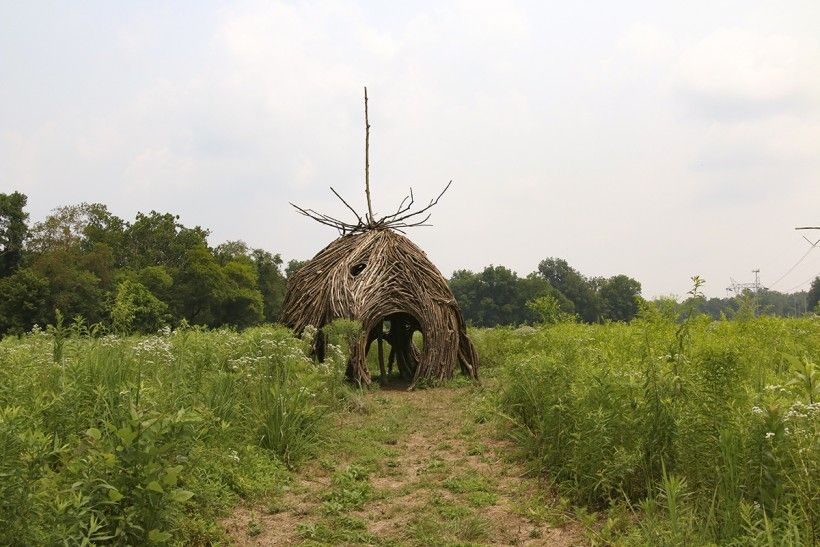
Earlier this summer, a whimsical outdoor sculpture sprung up along the Brandywine Conservancy & Museum of Art's campus grounds. On view through the new year, the Queen Anne's Lace Pod is a temporary, site-specific installation by Virginia-based artist Ian Stabler. Made entirely of natural materials gathered and found onsite, the towering sculptural pod is located in Potts Meadow along the Brandywine's Harvey Run Trail in Chadds Ford, PA.
Stabler was commissioned by the Brandywine River Museum of Art as part of its ongoing sculptural program inviting artists to explore their responses to the local landscape. Tying together the Brandywine’s dual mission of art and nature, the Queen Anne’s Lace Pod reflects Stabler’s response to the local countryside and his abiding interest in how art can be incorporated into the natural landscape.
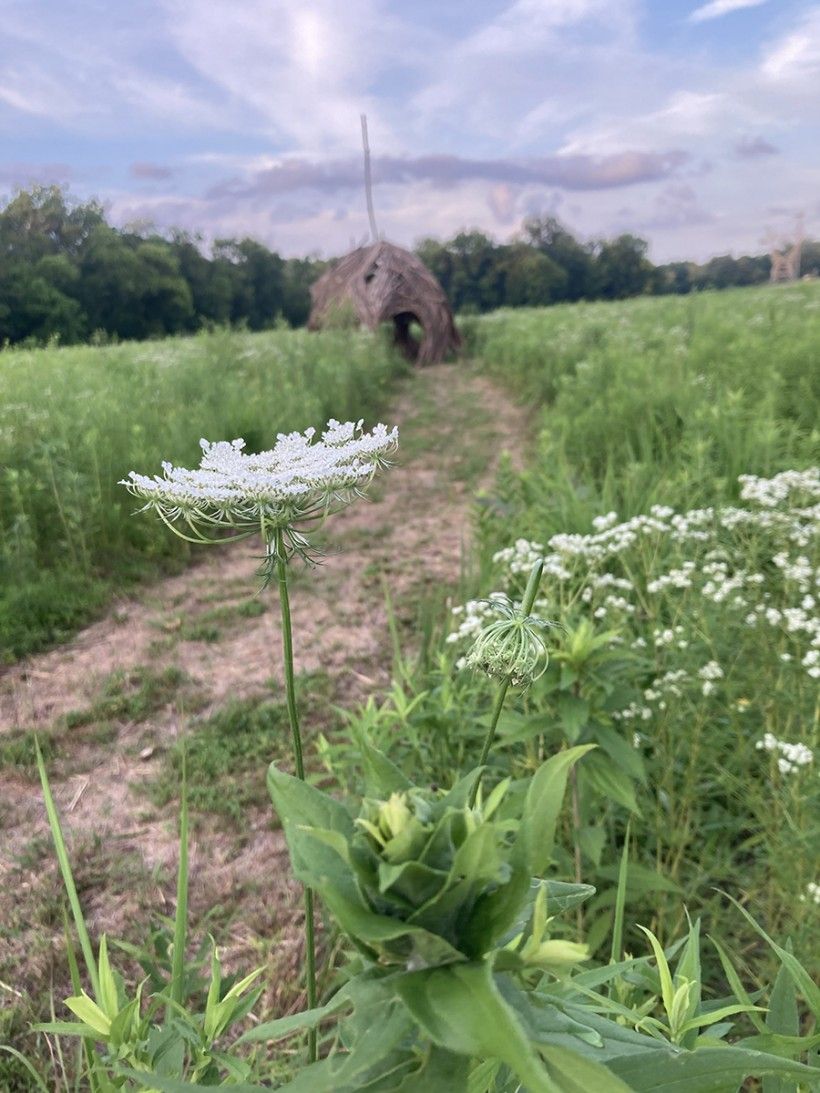
The artist’s initial inspiration for this project was a painting by the late artist George A. (“Frolic”) Weymouth—Brandywine’s co-founder—titled August (1974), which features a hill covered in Queen Anne’s Lace flowers. “August is my favorite of Frolic’s works and one that I have linked with the Brandywine,” said Ian Stabler regarding his vision for this project. “I see the design of the structure both as an homage to this beautiful plant and to Frolic’s enduring legacy at the Brandywine. The design references the bloom’s form turned upside down so that the visitor enters into the crown itself, while the stalk of the plant rises above them into the sky. I envision the Pod as a place people can venture to and from, experiencing the beauty and diversity of the land.”
Stabler grew up in New York but frequently visited relatives in the Brandywine area since childhood. His deep affinity for the countryside and river contributed to his formation as a land artist and environmentalist. Stabler uses found wood and materials in his work to create ephemeral sculptures that reference and signify the land and landscapes from which they originate. For the Queen Anne’s Lace Pod, Stabler weaved together branches, sticks and leaves gathered throughout the Brandywine’s campus to create the walls and windows of the structure. A bench built inside the pod allows people to sit while viewing the meadow and sky through door and window openings.
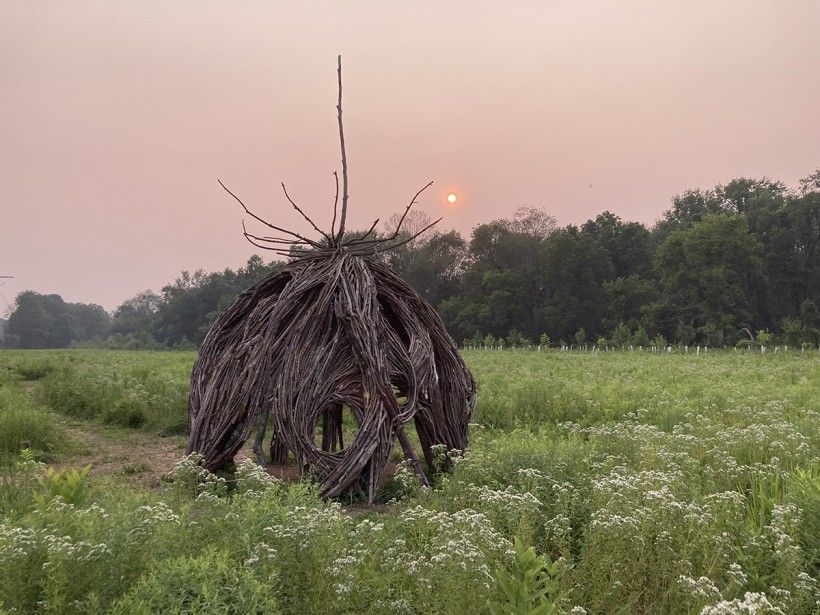
In addition to the Queen Anne’s Lace Pod, the Museum’s campus grounds are home to five bronze sculptures, including Tipping Point (2019)—a recent addition by artist Rikki Morely Saunders that was unveiled at the Brandywine earlier this summer. The other bronze sculptures include Boy with Hawk (1971), by Charles Parks; Miss Gratz (1984), by J. Clayton Bright; Helen (1989), by André Harvey; and R. B. (2004), by Dan Ostermiller.
Please note: While the Brandywine River Museum of Art and the Brandywine’s campus grounds in Chadds Ford remain temporarily closed due to the historic flood that hit our area in early September, the Harvey Run Trail and the Queen Anne’s Lace Pod can still be accessed by parking at the Chadds Ford Township Building, located at 10 Ring Road, Chadds Ford, PA, 19317. Updates regarding the reopening of the Museum and campus grounds can be found at www.brandywine.org/reopening.
Rikki Saunders—Artist, Equestrian, Conservationist—unveils new sculpture at Brandywine
Recently, our sister organization the Brandywine River Museum of Art unveiled a new sculpture on the Brandywine's campus, near the entrance to the Museum, by local artist Rikki Morley Saunders. Titled Tipping Point (2019), the sculpture is cast in bronze and features two life-sized majestic and fearsome peacocks intertwined in mid-air battle.
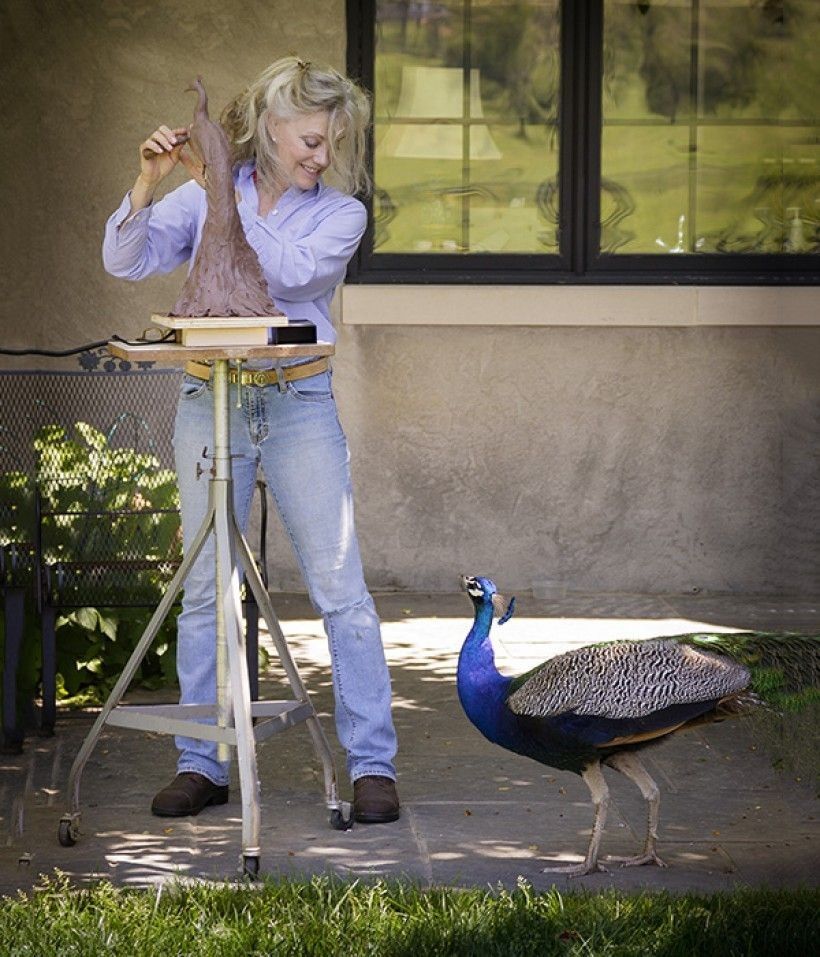
A well-respected sculptor, known for capturing dramatic moments in nature and for her astute sense of form, Rikki creates her lifelike animals after long periods of intense close study. In addition to her artistic work, Rikki is also an accomplished horsewoman—who was a contender for a place on the 1984 Olympic U.S. Eventing Team—and is a fixture on the local Chester County equestrian scene.
Rikki is perhaps less well known for her work as a conservationist—but she is no less passionate and driven in this arena—forsaking a decade of her art practice to rally and galvanize her Chester County community to protect its rural nature.
After Pennsylvania Department of Transportation (PennDOT) issued a proposal in 1997 to significantly alter and widen Route 41 in Chester County, Rikki and many in the community were alarmed about the direct and indirect impacts this project would have on this rural area’s open space and farmland and the degradation it would cause to the environment. Encouraged by several leading conservationists, including Henry Jordan and Brandywine’s Chairman George A. “Frolic” Weymouth, Rikki co-founded S.A.V.E. (Safety, Agriculture, Villages & Environments) and began a 10-year effort to promote alternatives to PennDOT’s conventional approach to highway improvements and other conservation issues.
In addition to these public efforts to aid open space, Rikki and her husband, Jesse, also worked with the Brandywine to place an easement on their farm in Londonderry Township to forever protect the property from development.
Today, the efforts continue to protect southern Chester County from development and the next generation has taken the reins at S.A.V.E.—including Brandywine’s Assistant Director for Community Services Grant DeCosta, who serves as S.A.V.E.’s current Vice Chair. To learn more about this work, contact Grant at [email protected].
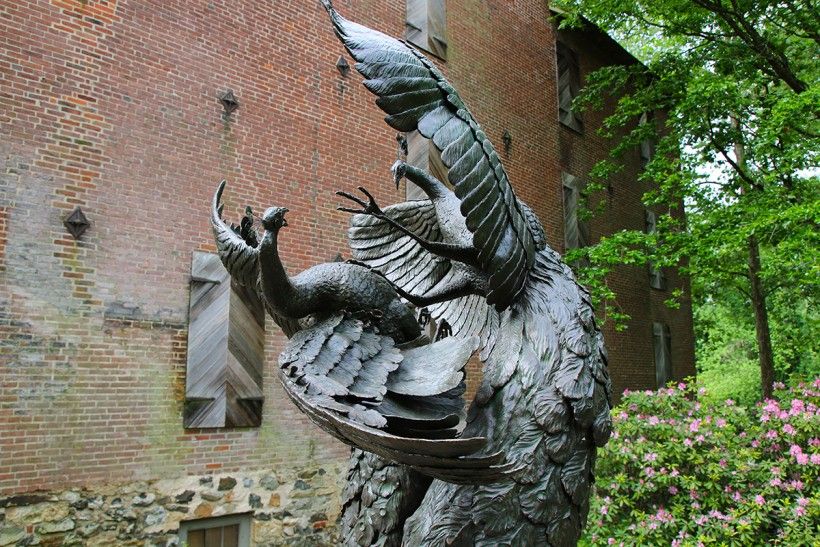
New Faces of the Conservancy
Some new faces have joined our team! Meet three of the Brandywine’s newest staff members: Caroline Fritschle, Evan Hunt and Clint Mautz.


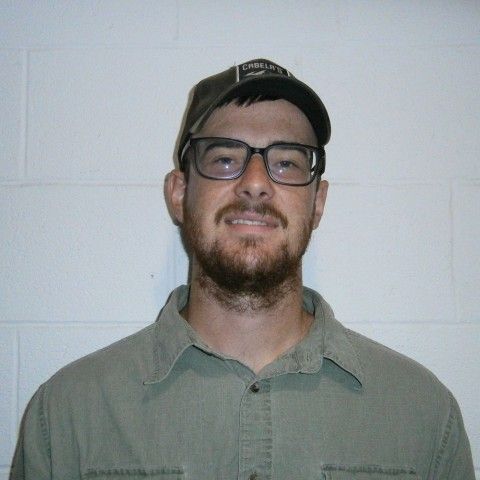
Caroline Fritschle is the Brandywine Conservancy’s new Easement Steward 2. Originally from Stamford, Connecticut, Caroline grew up volunteering at the only farm and nature center in town. Experiencing a slice of history before development pressures took hold, she learned to muck stalls and get lost in the woods. She went on to earn a BS in Environmental Science, a BA in Journalism, and a MS in Biological Oceanography from the University of Connecticut. After an 8-year hiatus in which she mastered the art of multitasking as a stay-at-home mom, she found her niche with Chester County’s Department of Parks and Preservation, working in the Farmland Preservation and Parks & Trails programs. Protecting Chester County’s natural resources and sense of place is her drive and passion, and she is thrilled to join the Brandywine Conservancy & Museum of Art in her new role as Easement Steward!
Evan Hunt is the Brandywine Conservancy’s new Easement Steward 1. Originally from southeastern Pennsylvania, Evan has been heavily involved in environmental conservation throughout the region. His work experience includes ecological restoration, native plant propagation, and land stewardship. Most recently he was the conservation associate at Willistown Conservation Trust where he worked on conservation easement monitoring and a number of forest restoration projects. Evan holds a BS in environmental studies from Ursinus College.
Clint Forest Mautz joined the Brandywine Conservancy team as a new preserve steward at the Laurels. Mautz grew up in a lake community in Highland Lakes, NJ. He has a Bachelor of Science degree in Environmental Sustainability and a minor in Biology from William Paterson University in Wayne, NJ. Eager to pursue a career in natural resource management and conservation, Mautz learned various arboricultural skills such as tree identification, pruning, planting and advanced removal techniques, and previously worked with the Bartlett Tree Experts in West Chester, PA. Mautz and his fiancé, Rebecca, plan to get married next May 2022. Together they share a two-year-old boxer/lab mix, named Oakley. Mautz enjoys camping, hiking, hunting and fishing and looks forward to working for the Brandywine Conservancy.
Meet the Easement Team
As easement monitoring season approaches, meet the members of our team who are your partners in land stewardship. From left to right: Kristen Frentzel, Easement Manager; Caroline Fritschle, Easement Steward; and Evan Hunt, Easement Steward.
When the Conservancy is granted a conservation easement for a parcel of land, it must ensure that land remains permanently protected. We enter a cooperative partnership with the landowner to see that the property’s natural and water resources are cared for and conserved. Each year, the easement stewardship team visits every parcel of land subject to our easements—whether in person or through our remote satellite monitoring technology. Between annual visits, we also assist landowners by providing free consultations on land management, reviewing construction or forest management plans, and sharing information and resources on land stewardship.